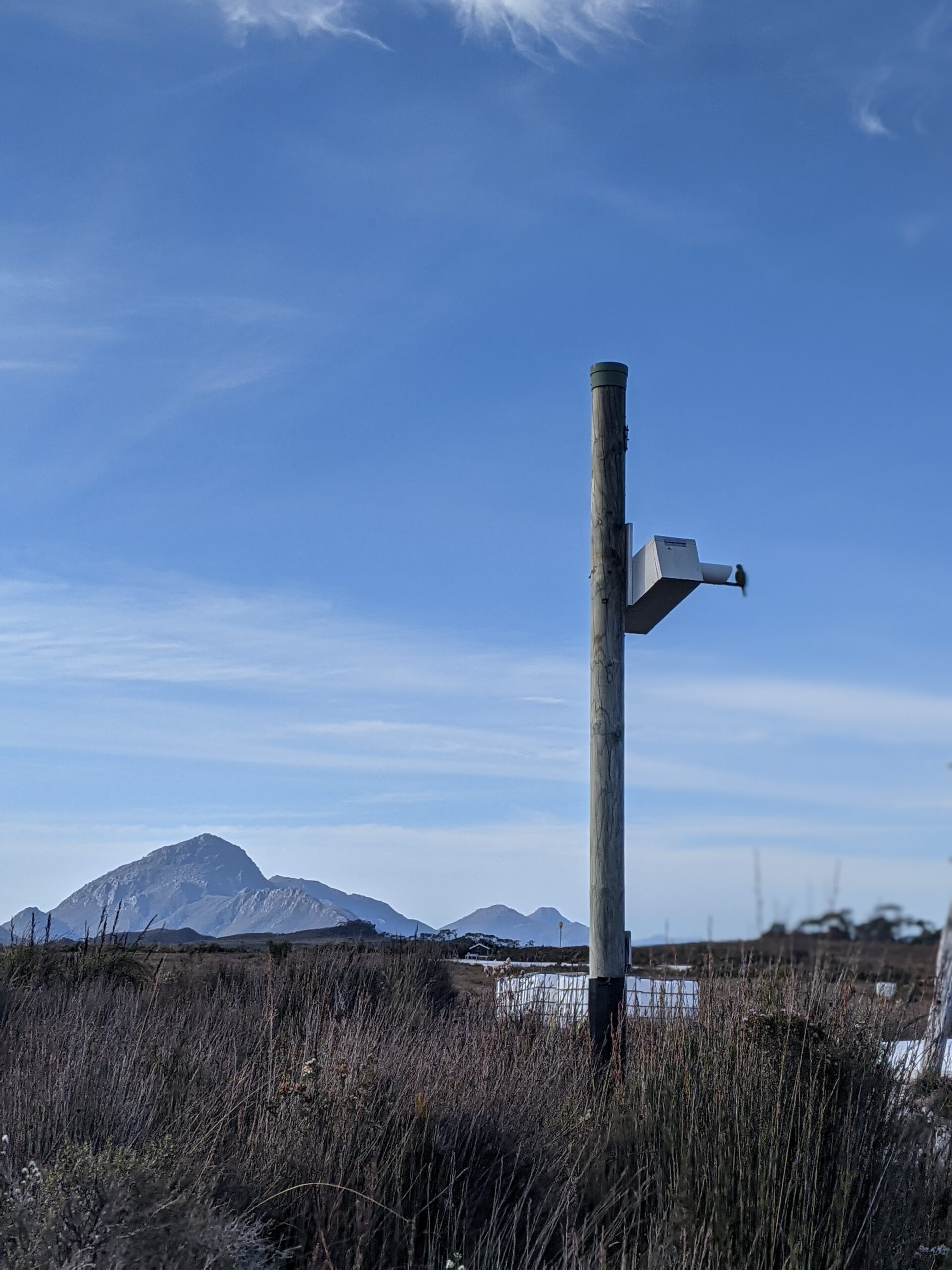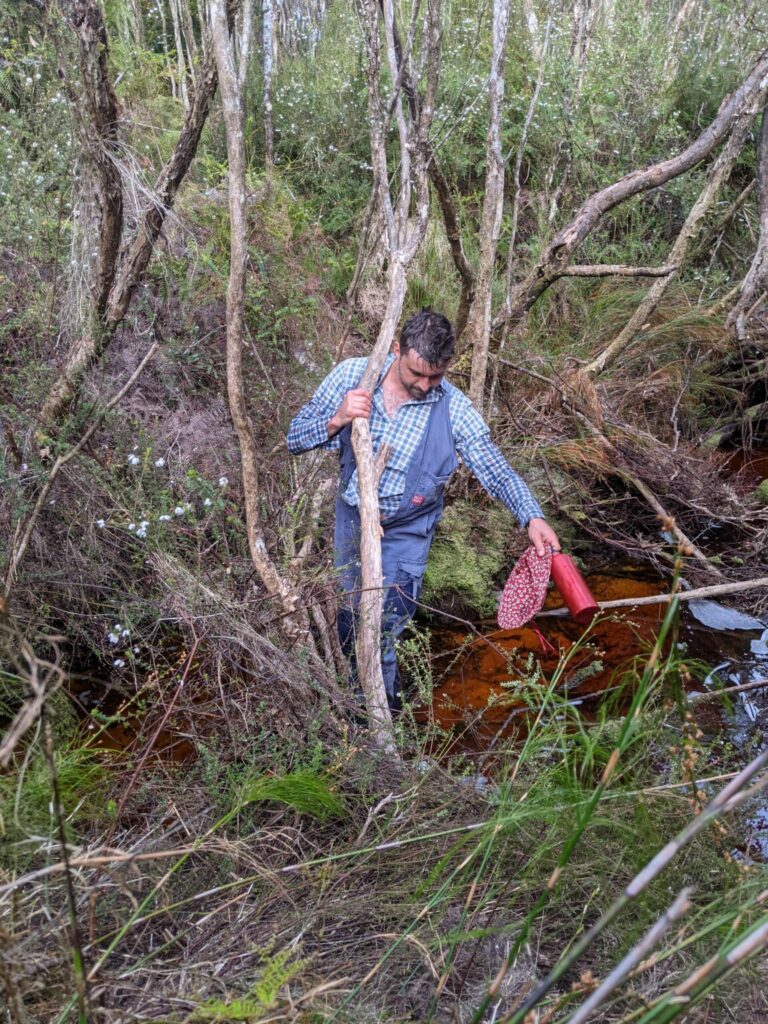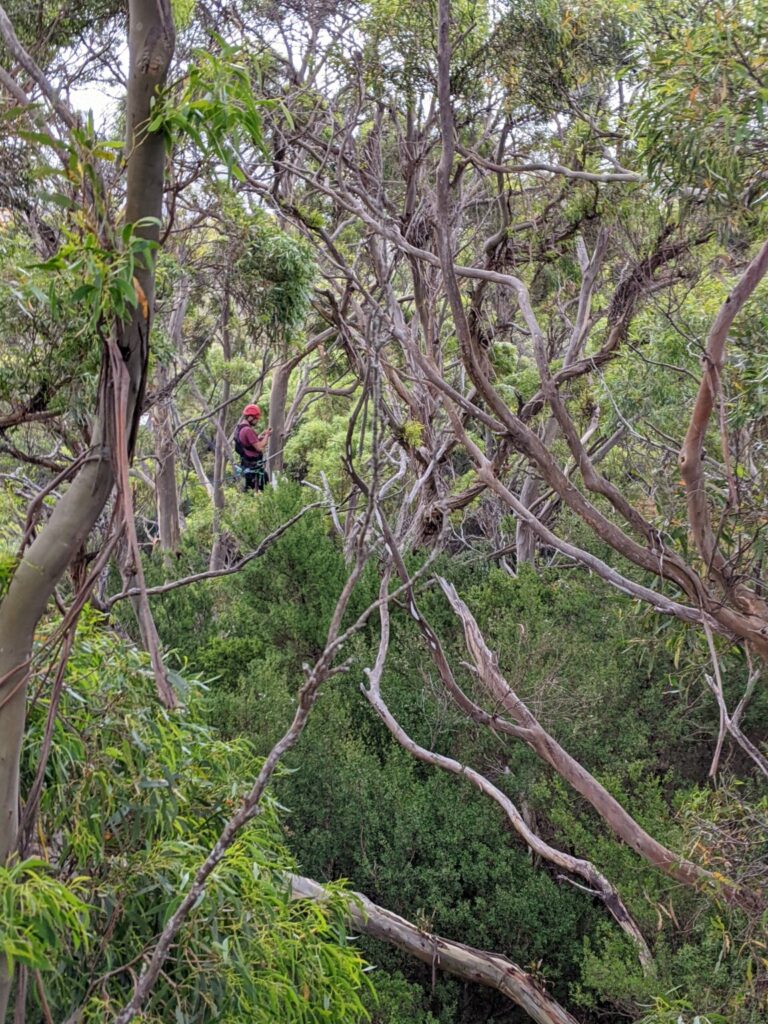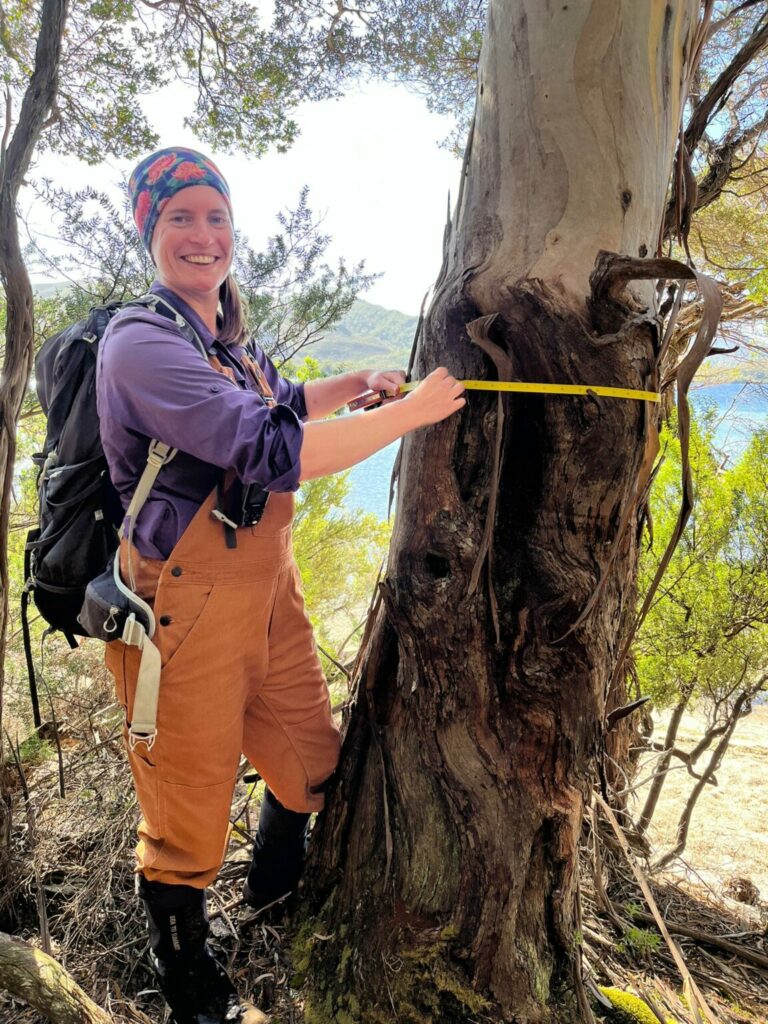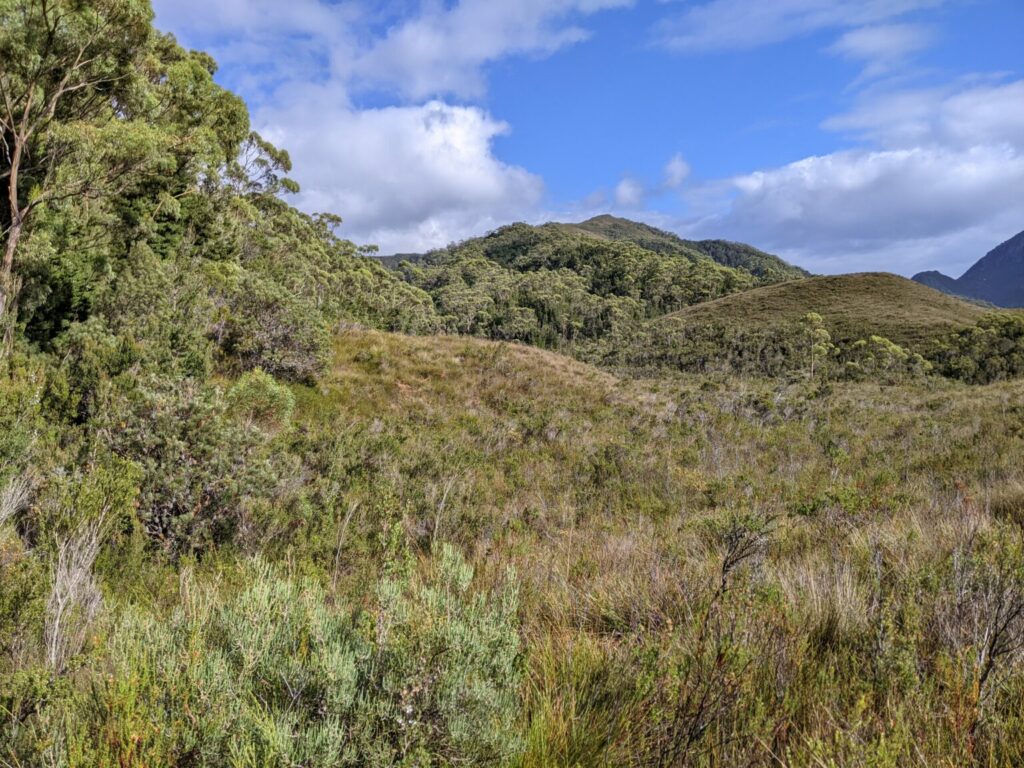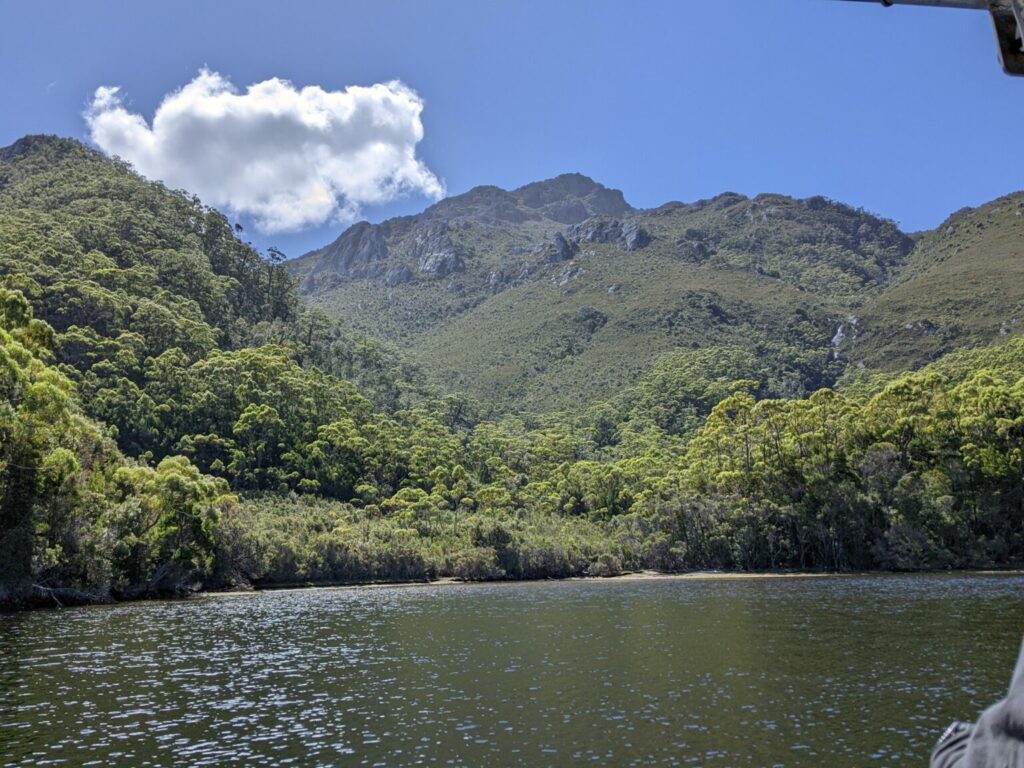Orange-bellied Parrots (Neophema chrysogaster) are one of Australia’s most endangered birds. Although they would once have been more widespread, these colourful parrots now only breed in the Melaleuca valley in the Tasmanian Wilderness World Heritage Area. Each year, the entire population migrates along the Tasmanian west coast to coastal Victoria and south-eastern South Australia where they spend winter, returning again in early spring. This year we were delighted to hear that around 70 birds returned from migration to their breeding grounds ahead of the 2022/23 breeding season. According to the Tasmanian Department of Natural Resources and Environment (NRE), this is the second time in more than a decade that we have seen this many returning birds.
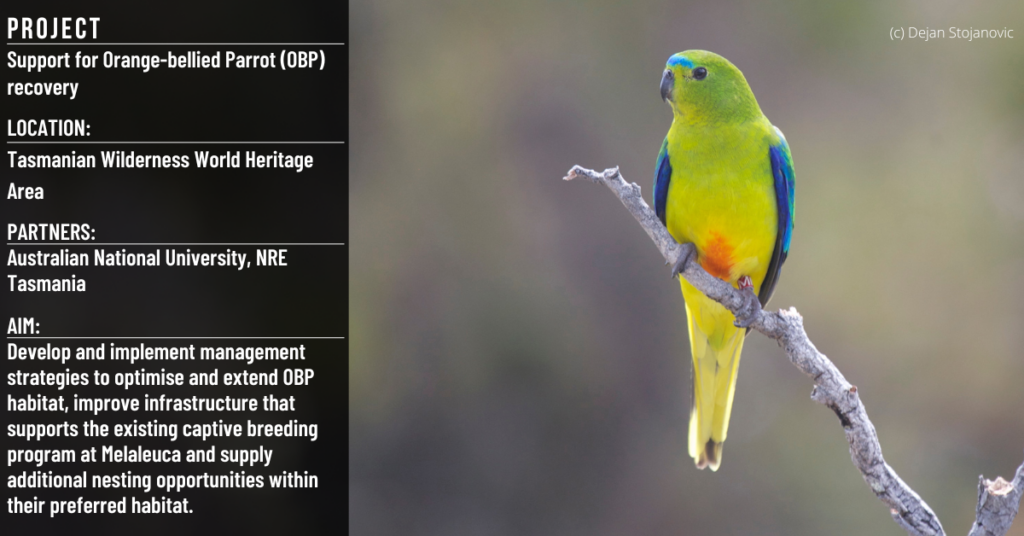
Like all other Australian parrots, Orange-bellied Parrots nest in tree hollows. However, all wild Orange-bellied Parrots are currently using nest-boxes to lay their eggs. These boxes need to be installed and maintained every year, which is very labor-intensive. Natural tree hollows are a critical resource for many of our most endangered species who use them for both breeding and shelter. However, hollows are slow to form, meaning that managers are reliant on nest boxes for parrots to breed and grow the population. To allow Orange-bellied Parrots to recolonize their historical range, we need to know if there are natural nesting opportunities available. To investigate this, NRM South has teamed up with researchers from the Australian National University’s Difficult Birds Research Group. Researchers and arborists have visited four areas in south-western Tasmania, conducting vegetation surveys, ground-based and arboreal hollow surveys.
The number of potential tree hollows can be estimated by observers from the ground looking up into the tree. However, ground surveys are often unreliable indicators of suitable hollow availability. Not all apparent hollows are suitable homes for wildlife because most animals are fussy about the size and shape of hollows they prefer. Orange-bellied Parrots select good hollows that are sheltered from the weather, have a small entrance and deep chambers (to exclude predators) and are well insulated. To get a more accurate picture of nest hollow suitability, researchers needed to get a closer look.
Within their breeding range, Smithton Peppermint (Eucalyptus nitida) is the dominant eucalyptus species, making it the most probable nest tree for Orange-bellied Parrots. Travelling by car, boat and on foot, researchers carried out 44 vegetation surveys and measured 991 trees across the Melaleuca valley, Bathurst Harbour, Lake Pedder and Birches Inlet. With the assistance of arborists, they climbed 118 trees to assess the size and shape of hollows and determine the actual availability and suitability for wildlife. About half of measured trees contained hollows and 133 hollows were measured. When researchers looked closer at the internal morphology of the hollows, they found that only 19 trees (just 16% of the total trees climbed) had hollows suitable for Orange-bellied Parrots to breed in.
As a result of this study, researchers regrettably concluded that nest boxes are likely to be an unavoidable tool of Orange-bellied Parrot conservation for the foreseeable future. Although south-west Tasmania undoubtedly contains some low-density nesting habitat, suitable nest cavities were found to be so rare that parrots may not encounter them frequently enough to allow for the scale of population growth needed to recolonize the area.
